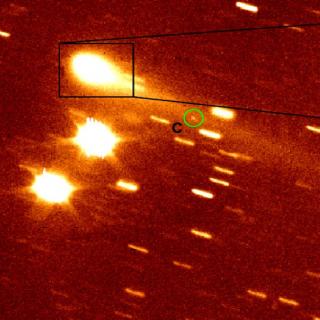Bibcode
Rodríguez Rodríguez, Javier; Díez Alonso, E.; Iglesias Álvarez, Santiago; Pérez Fernández, Saúl; Licandro, Javier; Alarcon, Miguel R.; Serra-Ricart, Miquel; Pinilla-Alonso, Noemi; Fernández, Susana del Carmen; de Cos Juez, Francisco Javier
Bibliographical reference
Monthly Notices of the Royal Astronomical Society
Advertised on:
1
2024
Citations
2
Refereed citations
2
Description
We present 24 new dense light curves of the near-Earth asteroids (3103) Eger, (161989) Cacus, (2100) Ra-Shalom, and (12711) Tukmit, obtained with the Instituto Astrofísico Canarias 80 and Telescopio Abierto Remoto 2 telescopes at the Teide Observatory (Tenerife, Spain) during 2021 and 2022, in the framework of projects visible NEAs observations survey and NEO Rapid Observation, Characterization and Key Simulations. The shape models and rotation state parameters (P, λ, β) were computed by applying the light curve inversion method to the new data altogether with the archival data. For (3013) Eger and (161989) Cacus, our shape models and rotation state parameters agree with previous works, though they have smaller uncertainties. For (2100) Ra-Shalom, our results also agree with previous studies. Still, we find that a Yarkovsky-O'Keefe-Radzievskii-Paddack acceleration of υ = (0.223 ± 0.237) × 10-8 rad d-2 slightly improves the fit of the light curves, suggesting that (2100) Ra-Shalom could be affected by this acceleration. We also present for the first time a shape model for (12711) Tukmit, along with its rotation state parameters (P = 3.484900 ± 0.000031 h, λ = 27° ± 8°, β = 9° ± 15°).
Related projects

Small Bodies of the Solar System
This project studies the physical and compositional properties of the so-called minor bodies of the Solar System, that includes asteroids, icy objects, and comets. Of special interest are the trans-neptunian objects (TNOs), including those considered the most distant objects detected so far (Extreme-TNOs or ETNOs); the comets and the comet-asteroid
Julia de
León Cruz